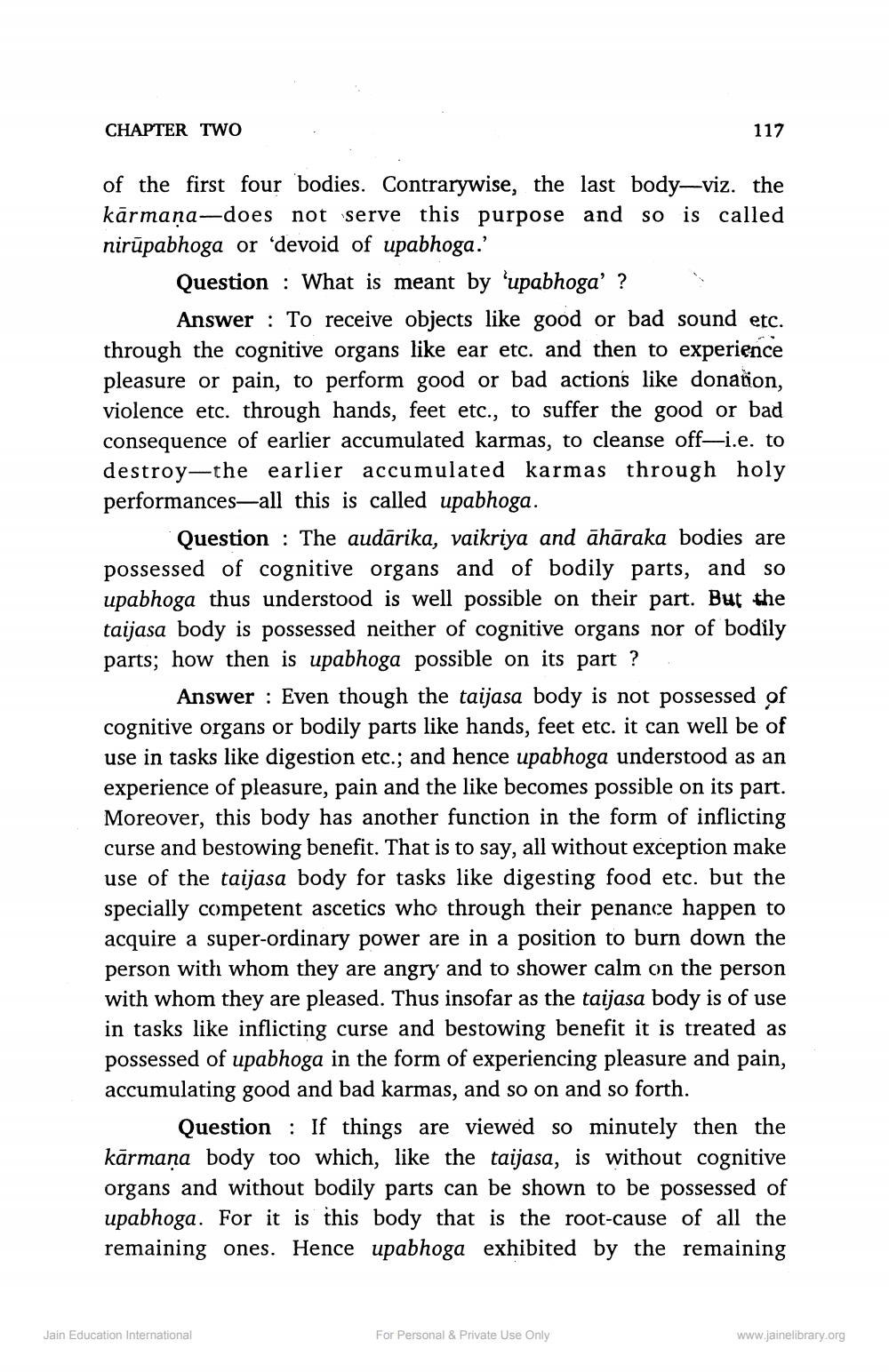________________
CHAPTER TWO
of the first four bodies. Contrarywise, the last body-viz. the kārmaṇa-does not serve this purpose and so is called nirupabhoga or 'devoid of upabhoga.'
Question: What is meant by 'upabhoga' ?
Answer To receive objects like good or bad sound etc. through the cognitive organs like ear etc. and then to experience pleasure or pain, to perform good or bad actions like donation, violence etc. through hands, feet etc., to suffer the good or bad consequence of earlier accumulated karmas, to cleanse off-i.e. to destroy the earlier accumulated karmas through holy performances-all this is called upabhoga.
117
Question: The audarika, vaikriya and āhāraka bodies are possessed of cognitive organs and of bodily parts, and so upabhoga thus understood is well possible on their part. But the taijasa body is possessed neither of cognitive organs nor of bodily parts; how then is upabhoga possible on its part ?
Answer: Even though the taijasa body is not possessed of cognitive organs or bodily parts like hands, feet etc. it can well be of use in tasks like digestion etc.; and hence upabhoga understood as an experience of pleasure, pain and the like becomes possible on its part. Moreover, this body has another function in the form of inflicting curse and bestowing benefit. That is to say, all without exception make use of the taijasa body for tasks like digesting food etc. but the specially competent ascetics who through their penance happen to acquire a super-ordinary power are in a position to burn down the person with whom they are angry and to shower calm on the person with whom they are pleased. Thus insofar as the taijasa body is of use in tasks like inflicting curse and bestowing benefit it is treated as possessed of upabhoga in the form of experiencing pleasure and pain, accumulating good and bad karmas, and so on and so forth.
Question: If things are viewed so minutely then the kārmaṇa body too which, like the taijasa, is without cognitive organs and without bodily parts can be shown to be possessed of upabhoga. For it is this body that is the root-cause of all the remaining ones. Hence upabhoga exhibited by the remaining
Jain Education International
For Personal & Private Use Only
www.jainelibrary.org




